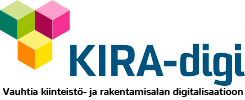Usage data of office buildings into spotlight
In the experiment conducted by the Aalto University, the measurement data produced by a building is taken into use for producing a forecast of the future usage of the property.
What kind of problem is the project trying to solve?
Typically, there is very little information available on the usage of office buildings. The number of users and the utilisation rate vary, and each property is used in a different manner from the next.
Nevertheless, the utilisation of a property has a major impact on the maintenance costs, energy consumption and comfort of use of the property. The data on the utilisation of an office building makes it possible to forecast its usage in the future and maintenance needs, as well as the provision of better services.
This project is about finding a cost-effective solution to collecting usage data of office buildings.
Objective: Existing sensors and indicators to provide user data
Modern buildings are equipped with instruments and sensors that provide information on the functionality of ventilation, heating and air conditioning, for example. With the help of machine learning, this data can also be used in the estimation of the number of users and utilisation rate of the property.
The method created in the experiment will provide information on the usage of the property cost-effectively and without compromising the privacy of the users (as opposed to a camera surveillance system, for example, that is based on counting the number of visitors).
What is done in this project?
The project will produce a computational method for forecasting the usage of facilities by using existing measurement data. In addition, forecast models will be tested in real-life operational conditions.
What are the expected results of the experiment?
If the model is successful, it will allow the forecasting of the usage of facilities on the following day, as well as the times when the first users enter the premises and when the last ones leave.
Who benefits?
From the perspective of companies, the results will form a basis for providing solutions and services based on the data on the usage of facilities and forecasting the usage for a lager user base. For property users and owners, it will offer methods of estimating the utilisation rate of their buildings and using the usage forecasts in their own operations.




